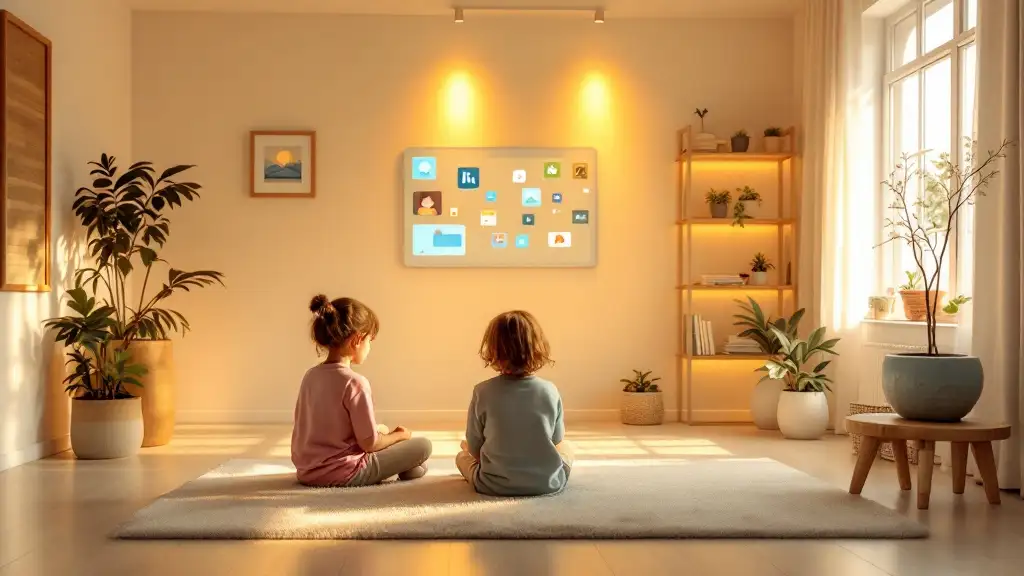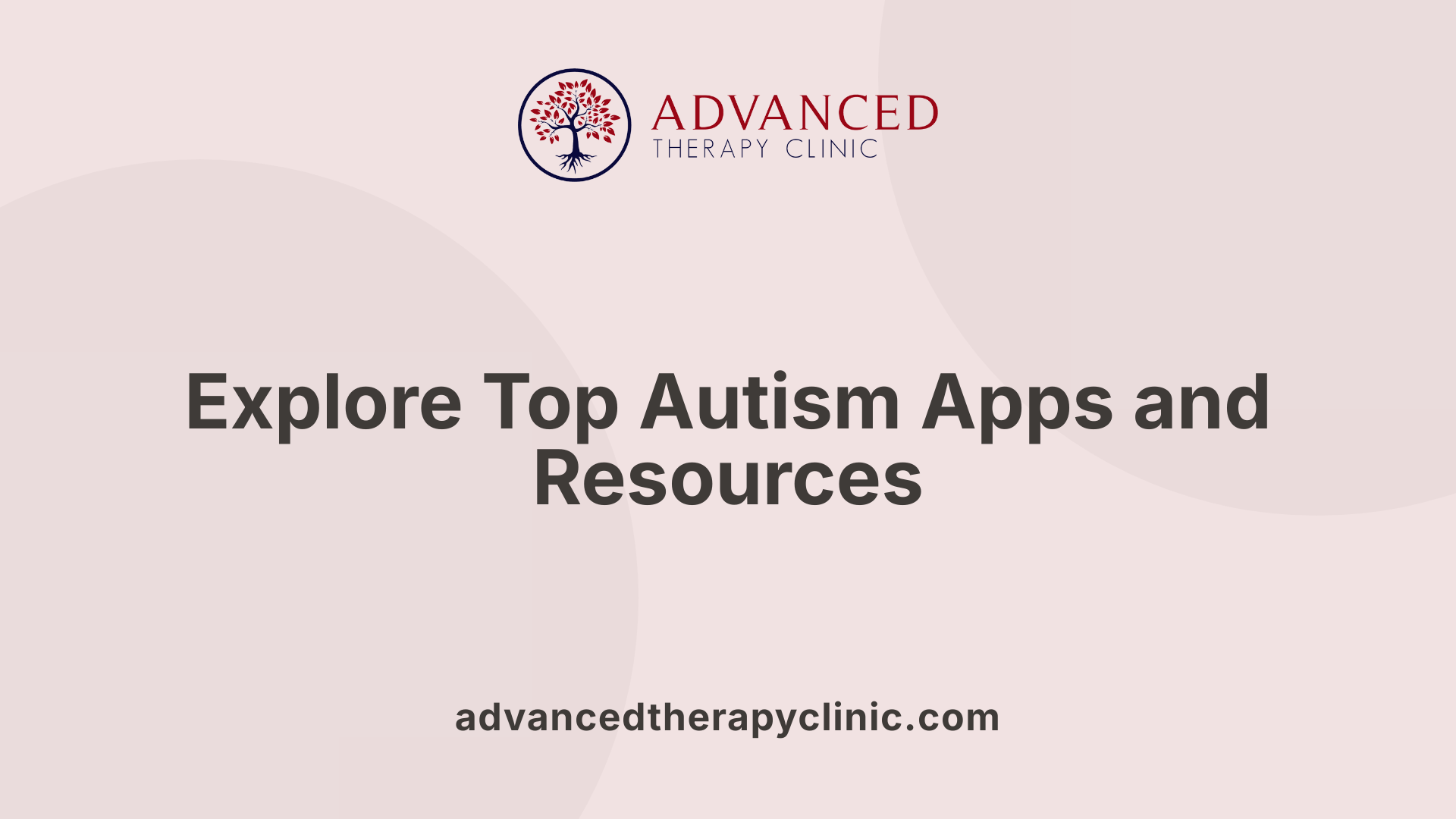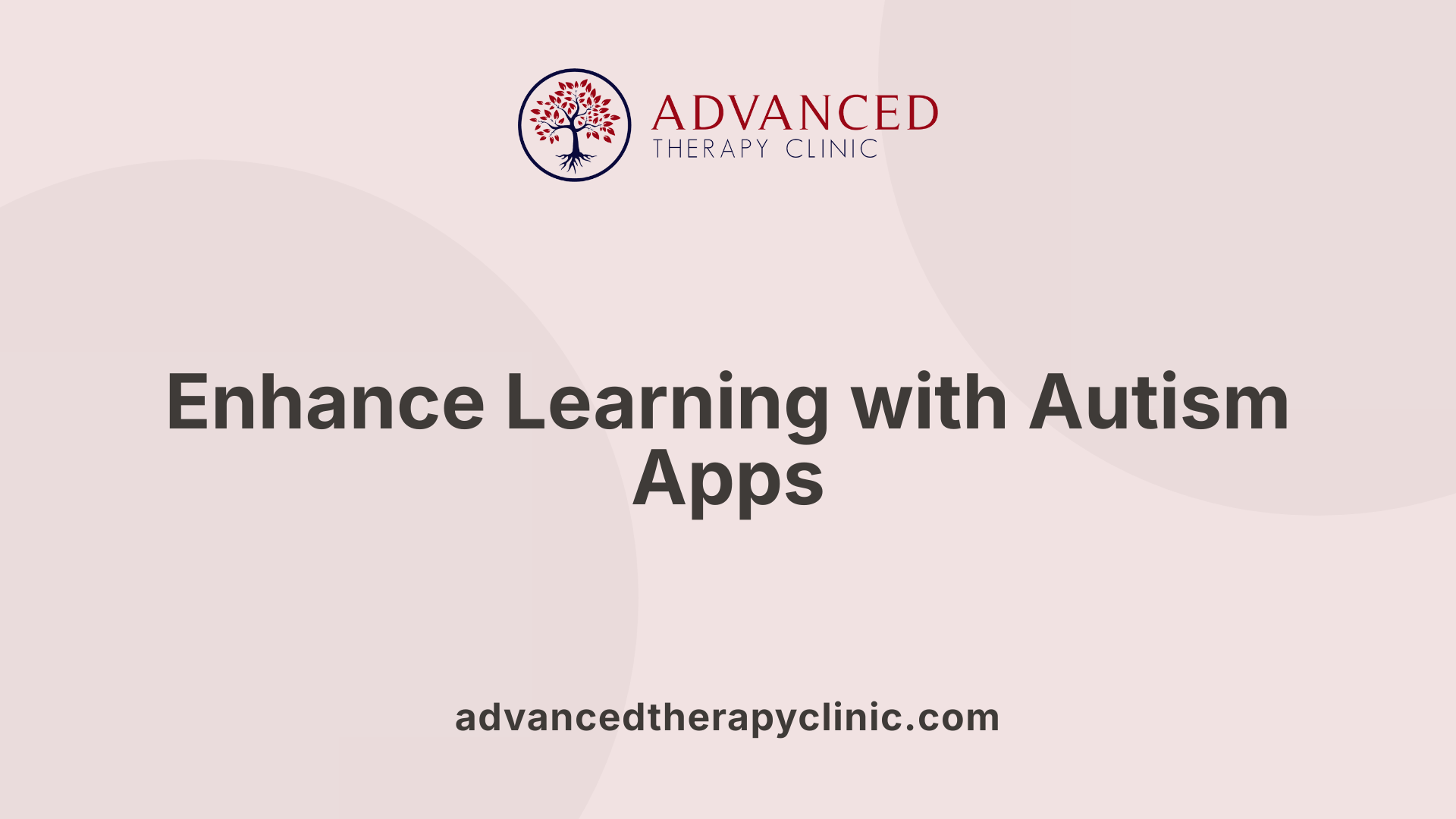Autism Apps For Children


Enhancing Development Through Digital Tools
Autism apps and resources represent a rapidly expanding digital landscape aimed at supporting children on the autism spectrum. These tools are designed to facilitate communication, social skills, emotional regulation, and daily routines, promoting independence and learning. From visual schedules to speech-generating applications, a diverse array of resources can be tailored to meet individual needs, making a significant impact on children’s development and quality of life.
Overview of Autism Apps and Resources for Children
 Autism apps and resources for children are a wide array of digital tools designed to support various developmental areas such as communication, social skills, behavior management, and emotional regulation. They are tailored to meet the unique needs of each child, offering both educational and practical support.
Autism apps and resources for children are a wide array of digital tools designed to support various developmental areas such as communication, social skills, behavior management, and emotional regulation. They are tailored to meet the unique needs of each child, offering both educational and practical support.
Popular applications like 'Proloquo2Go' provide augmentative and alternative communication (AAC) options for children with speech difficulties, helping them express themselves more effectively. Tools such as 'ChoiceWorks' and 'Zones of Regulation' assist children in managing daily routines, understanding emotions, and developing self-regulation skills.
In addition to dedicated apps, many online resources serve as invaluable guides for parents, educators, and therapists. Websites like 'Children’s National', 'Vanderbilt Kennedy Center', and 'Waterford.org' offer extensive curricula, downloadable social stories, and educational activities designed specifically for children with ASD.
Sleep challenges are also addressed through specialized apps like 'White Noise', 'Go To Bed', and 'SleepBot'. These tools help establish healthy sleep habits, which are crucial for overall development.
The list of helpful apps continues with options like 'MITA' (Mental Imagery Therapy for Autism), a scientifically supported language therapy app that has shown significant improvements in language skills. This app, among others, utilizes evidence-based techniques such as ABA (Applied Behavior Analysis) to foster learning and cognitive growth.
Here is a closer look at some of the popular apps and their core functionalities:
| App Name | Main Purpose | Features & Benefits |
|---|---|---|
| Proloquo2Go | Communication support | AAC with customizable vocab and symbol support |
| ChoiceWorks | Routine and behavior management | Visual schedules, timers, reward systems |
| Zones of Regulation | Emotional regulation | Recognizing and managing emotions |
| MITA | Language and cognitive development | Adaptive exercises, research-backed, multi-language |
| White Noise | Sleep aid | Enhance sleep routines, reduce anxiety |
Overall, these digital tools and resources aim to boost independence and promote social and emotional development. They are best used in conjunction with professional guidance to ensure the most effective support tailored to each child's needs.
Features and Benefits of Autism Apps for Children

What features and benefits do autism apps offer to children?
Autism apps provide an array of features that support children’s learning, communication, and emotional well-being. They often include tools like speech generators and Augmentative and Alternative Communication (AAC) systems, which help children express their needs and thoughts more clearly. Visual supports such as social stories, visual schedules, and routines are commonly integrated, assisting children in understanding daily activities and transitions.
Moreover, many apps incorporate emotion recognition and regulation features. For example, tools like 'Draw Emotions' and 'Emotionary by Me' help children identify and manage feelings, promoting emotional awareness and reducing anxiety.
Engagement is boosted through game-like interfaces, personalization options, and multimodal outputs, making learning enjoyable and motivating. These features encourage children to participate actively, learn social cues, and develop essential skills in literacy, math, and social-emotional areas.
Additional benefits include fostering independence, improving social skills, and aiding in behavior management. The tailored, interactive nature of these apps ensures they meet individual needs, supporting children in achieving meaningful developmental milestones.
Supporting Daily Routines and Emotional Needs
Apps such as 'My Video Schedule' and 'ChoiceWorks' help children understand and manage daily routines, reducing stress and improving self-regulation.
Enhancing Motivation and Learning
With features designed to cater to children's interests and learning styles, these tools can motivate children to explore new skills, participate in social interactions, and develop greater independence.
| App Feature | Purpose | Example Apps | Additional Details |
|---|---|---|---|
| Speech development & AAC | Improve communication skills | Proloquo2Go, Avaz AAC | Supports non-verbal children and speech delays |
| Visual supports & routines | Facilitate daily activities | First Then Visual Schedule, Time Timer | Promote understanding of routines and transitions |
| Emotion recognition & regulation | Manage feelings effectively | Draw Emotions, The Mood Meter | Aid emotional awareness and self-control |
| Engagement & motivation | Encourage participation in learning | Games, personalized interfaces | Increases enthusiasm and sustained attention |
Trustworthy Sources and Additional Resources
Organizations like Autism Speaks, VANDERBILT Kennedy Center, and Bridging Apps offer extensive lists of highly rated autism apps. Working with healthcare providers ensures the chosen tools are suitable for each child's specific needs.
In conclusion, autism apps are valuable resources that bridge the gap between professional support and daily learning. They empower children with autism to communicate better, manage emotions, and develop vital life skills in engaging and accessible ways.
Guidance on Choosing Appropriate Autism Apps for Children
 Selecting the right apps for children with autism involves understanding each child's unique needs, skills, and preferences. Begin by assessing their developmental level and specific challenges—whether it's communication, social skills, emotional regulation, or daily routines. This helps narrow down useful features and functions.
Selecting the right apps for children with autism involves understanding each child's unique needs, skills, and preferences. Begin by assessing their developmental level and specific challenges—whether it's communication, social skills, emotional regulation, or daily routines. This helps narrow down useful features and functions.
Collaboration with healthcare professionals, such as speech therapists, occupational therapists, or educators, is essential. They can recommend evidence-based apps that align with therapeutic goals and are appropriate for the child's age and abilities. Many reputable resources, including organizations like Autism Speaks and Vanderbilt Kennedy Center, offer curated lists of effective apps.
When evaluating apps, look for certain features to ensure they support your child's development effectively:
- Visual supports like pictures, symbols, and schedules to aid understanding.
- Accessibility options such as screen readers, adjustable text, or simple interfaces.
- Privacy policies that protect user data.
- Multimedia elements, including speech and sounds, to engage children with diverse learning styles.
It's equally important to consider how engaging and motivating the app is. An interactive, visually appealing app that aligns with your child's interests is more likely to foster consistent use and skill progress.
To choose the best tools, try out different apps with professional guidance. Observe how your child responds—do they stay engaged? Do they demonstrate improvements in targeted areas? Continued monitoring and adjustment ensure the selected app remains beneficial.
In summary, effective app selection combines an understanding of your child's needs, professional input, careful evaluation of features, and ongoing assessment of effectiveness. This approach maximizes the potential of technology to support development and independence.
Popular Autism Apps and Their Purposes
There are many apps designed to support children and adults with autism spectrum disorder (ASD) across various areas such as communication, social skills, emotional regulation, and routines.
What are some popular autism apps and their purposes?
One of the most widely used categories includes communication and augmentative and alternative communication (AAC) apps. Tools like Proloquo2Go and TouchChat assist children with speech difficulties by providing voice output and symbol-based communication. These apps help individuals express their needs and participate more fully in social interactions.
For social understanding and behavior management, apps such as Pictello and Social Story Creator enable the creation of visual stories. These stories prepare children for social situations or transitions, reducing anxiety and improving social skills.
Emotional regulation is another crucial domain addressed by specific apps. For example, Zones of Regulation and Mood Meter help children recognize, understand, and manage their emotions. These tools promote self-awareness and coping strategies.
Managing daily routines and sleep is supported by apps like White Noise, which fosters better sleep habits through calming sounds, and Time Timer, which helps children understand and manage time during routines or transitions.
Additionally, many apps are tailored to different age groups. For adults, apps such as Tiimo and Calm provide mindfulness training and stress management support. For children, apps like Daniel Tiger's Grr-ific Feelings and ChoiceWorks aim to build emotional and behavioral understanding.
Below is a summary table of popular autism apps and their primary purposes:
| App Name | Purpose | Target Group | Notable Features |
|---|---|---|---|
| Proloquo2Go | Communication/Speech support | Children and adults with speech difficulties | Symbol-based AAC, voice output |
| Pictello | Social stories, behavioral support | Children, educators | Customizable visual stories, multimedia integrations |
| Zones of Regulation | Emotional regulation | Children | Color-coded zones, self-regulation strategies |
| Mood Meter | Emotional recognition | Children, teens | Tracks feelings, promotes emotional awareness |
| White Noise | Sleep support | Children, adults | Calming background sounds |
| Time Timer | Routine management | Children, adults | Visual time countdown, helps understand duration |
These apps serve as supportive tools, complementing professional healthcare and therapy. Selecting the right app depends on understanding the individual’s specific needs, age, and goals, ensuring a personalized approach to support.
Educational Strategies Supported by Autism Apps for Children

How do autism apps support educational strategies for children with autism?
Autism apps serve as effective tools in delivering educational strategies tailored to children with autism spectrum disorder. They incorporate evidence-based practices such as visual supports, social stories, and interactive activities that are designed to promote learning and skill development.
Many apps include visual schedules and pictorial cues, helping children understand routines, manage transitions, and enhance independence. For example, visual schedule apps like Children with Autism and My Video Schedule allow children to anticipate and prepare for upcoming activities, reducing anxiety and encouraging self-regulation.
Social stories created through apps like Pictello or social story creators help teach social norms, appropriate behaviors, and emotional understanding. These story-based tools make abstract social concepts concrete, fostering better social comprehension.
Interactive activities within apps, such as question and answer games, emotion recognition exercises like Draw Emotions, or language development applications like Proloquo2Go and MITA, actively engage children and support speech and language development. These tools often employ symbol-based communication, which is crucial for non-verbal children.
Monitoring and data collection are also integral features of many autism apps. Apps like Behavior World or Mood Meter track behaviors, moods, and progress, providing valuable insights for caregivers and professionals. This data-driven approach helps tailor interventions, set realistic goals, and modify strategies for each child's evolving needs.
Furthermore, apps support emotional regulation and social interaction by offering tools such as Daniel Tiger’s Grr-ific Feelings or Zones of Regulation, guiding children in understanding and managing their emotions effectively.
Overall, autism apps extend traditional educational methods by making learning more engaging, accessible, and personalized. They help reinforce essential skills in communication, social understanding, and daily living, facilitating overall development in children with autism.
The Impact of Evidence-Based and Clinically Supported Apps

What are some evidence-based autism apps and their purposes?
One prominent example is the MITA (Mental Imagery Therapy for Autism) app, designed specifically for children with autism and language delays. This app utilizes ABA (Applied Behavior Analysis) principles and language therapy techniques to support language development. Over a three-year clinical trial involving 6,454 children, those using MITA experienced an average improvement of 2.2 times in their language scores compared to children who did not use the app. These results, published in the journal Healthcare, highlight how effective MITA can be.
MITA supports multiple languages, including English, Spanish, Portuguese, Russian, German, French, Italian, Arabic, Farsi, Korean, and Chinese, making it accessible to diverse populations. The app offers unlimited language and cognitive exercises designed to improve various skills. Its adaptive exercises are tailored to individual progress, fostering development across key areas.
This app is one among a curated list of tools aimed at children with autism, which also includes emotional regulation apps like Daniel Tiger's Grr-ific Feelings and social stories creators like Pictello. These resources are aligned with scientific efforts to provide targeted interventions supporting communication, social skills, and emotional understanding.
Apps like MITA exemplify how research-backed technology can significantly influence therapy outcomes. Their use demonstrates a commitment to integrating scientific findings into practical, accessible tools that benefit children with autism and their families.
Empowering Children Through Technology
Autism apps have become vital tools that empower children on the spectrum by supporting their communication, social, emotional, and daily living skills. Combining evidence-based approaches with user-friendly design, these digital resources enable personalized learning and development. Working alongside healthcare professionals and educators, parents can leverage these tools to create engaging, effective support systems that foster independence and improve quality of life. As technology continues to evolve, the potential for autism apps to enhance educational and developmental outcomes remains promising, making them indispensable in modern support strategies.
References
- Helpful Apps and Websites - Autism Spectrum Disorders Clinic
- Best Autism Apps for kids on iPad, iPhone and Android in ...
- Autism apps
- Language Therapy for Children - Apps on Google Play
- Best Apps for Kids with Autism | Common Sense Education
- Helpful Apps and Websites - Autism Spectrum Disorders Clinic
- Apps for Children with Autism and Aspergers
- Technology and Autism
- Autism Apps.docx
- Tips for Using Assistive Technology Devices
Recent articles

Expressive Speech Delay 2-Year-Old
Understanding and Addressing Expressive Speech Delay in Toddlers

How Speech Recognition Works
Unlocking the Power of Speech Recognition in Therapy and Healthcare

Autism and Head Size
Understanding the Complex Relationship Between Autism and Head Size

Occupational Therapy in Autism
Enhancing Independence and Quality of Life Through Occupational Therapy in Autism

Do Autistic People Understand Sarcasm?
Navigating the Nuances: Understanding Sarcasm and Social Communication in Autism

Autism Routines
Crafting Effective Daily Structures for Children with Autism

